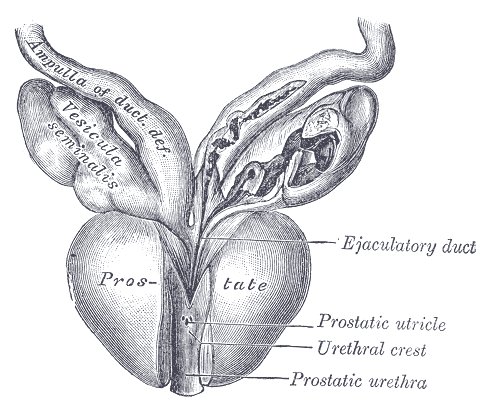WBR0506
| Author | [[PageAuthor::Gonzalo A. Romero, M.D. [1]]] |
|---|---|
| Exam Type | ExamType::USMLE Step 1 |
| Main Category | MainCategory::Pathology |
| Sub Category | SubCategory::Reproductive |
| Prompt | [[Prompt::A 60-year-old patient comes to the outpatient clinic complaining of increased urination throughout the night and difficulty starting and stopping the stream of urine. He was diagnosed with hypertension 10 years ago, and is currently taking amlodipine. His vitals are: 67 pulse/min, 16 respirations/min, blood pressure 135/85mmHg and temperature 37C. His physical exam is unremarkable. The patient’s primary care physician orders a PSA (prostate-specific antigen), which is increased. Which of the following is true about the most likely diagnosis causing this patient’s symptoms?]] |
| Answer A | AnswerA::Prostatic cancer is preceded by benign prostatic hypertrophy |
| Answer A Explanation | [[AnswerAExp::Incorrect. See overall explanation]] |
| Answer B | AnswerB::Prostatic cancer increases both total PSA and free PSA |
| Answer B Explanation | [[AnswerBExp::Incorrect.See overall explanation]] |
| Answer C | AnswerC::Benign prostatic hyperplasia is localized frequently in the posterior lobe of the prostate |
| Answer C Explanation | [[AnswerCExp::Incorrect.See overall explanation]] |
| Answer D | AnswerD::Prostatic cancer is localized frequently in the lateral lobes of the prostate |
| Answer D Explanation | [[AnswerDExp::Incorrect.See overall explanation]] |
| Answer E | AnswerE::Benign prostatic hyperplasia increases free PSA |
| Answer E Explanation | [[AnswerEExp::Correct.See overall explanation]] |
| Right Answer | RightAnswer::E |
| Explanation | [[Explanation::Common in men > 50 years of age. Hyperplasia (not hypertrophy) of the prostate gland. May be due to an age-related i in estradiol with possible sensitization of the prostate to the growthpromoting effects of DHT Characterized by a nodular enlargement of the periurethral (lateral and middle) lobes, which compress the urethra into a vertical slit. Often presents with increased frequency of urination, nocturia, difficulty starting and stopping the stream of urine, and dysuria.
May lead to distention and hypertrophy of the bladder, hydronephrosis, and UTis. Not considered a premalignant lesion. i free prostate-specific antigen (PSA). Treatment: arantagonists (terazosin, tamsulosin), which cause relaxation of smooth muscle; finasteride. ADC: Common in men > 50 years of age. Arises most often from the posterior lobe (peripheral zone) of the prostate gland and is most frequently diagnosed by digital rectal examination (hard nodule) and prostate biopsy. Prostatic acid phosphatase (PAP) and PSA are useful tumor markers (i total PSA, with J, fraction of free PSA). Osteoblastic metastases in bone may develop in late stages, as indicated by lower back pain and an i in serum alkaline phosphatase and PSA.  Educational Objective: |
| Approved | Approved::No |
| Keyword | WBRKeyword::Prostate cancer, WBRKeyword::BPH |
| Linked Question | Linked:: |
| Order in Linked Questions | LinkedOrder:: |